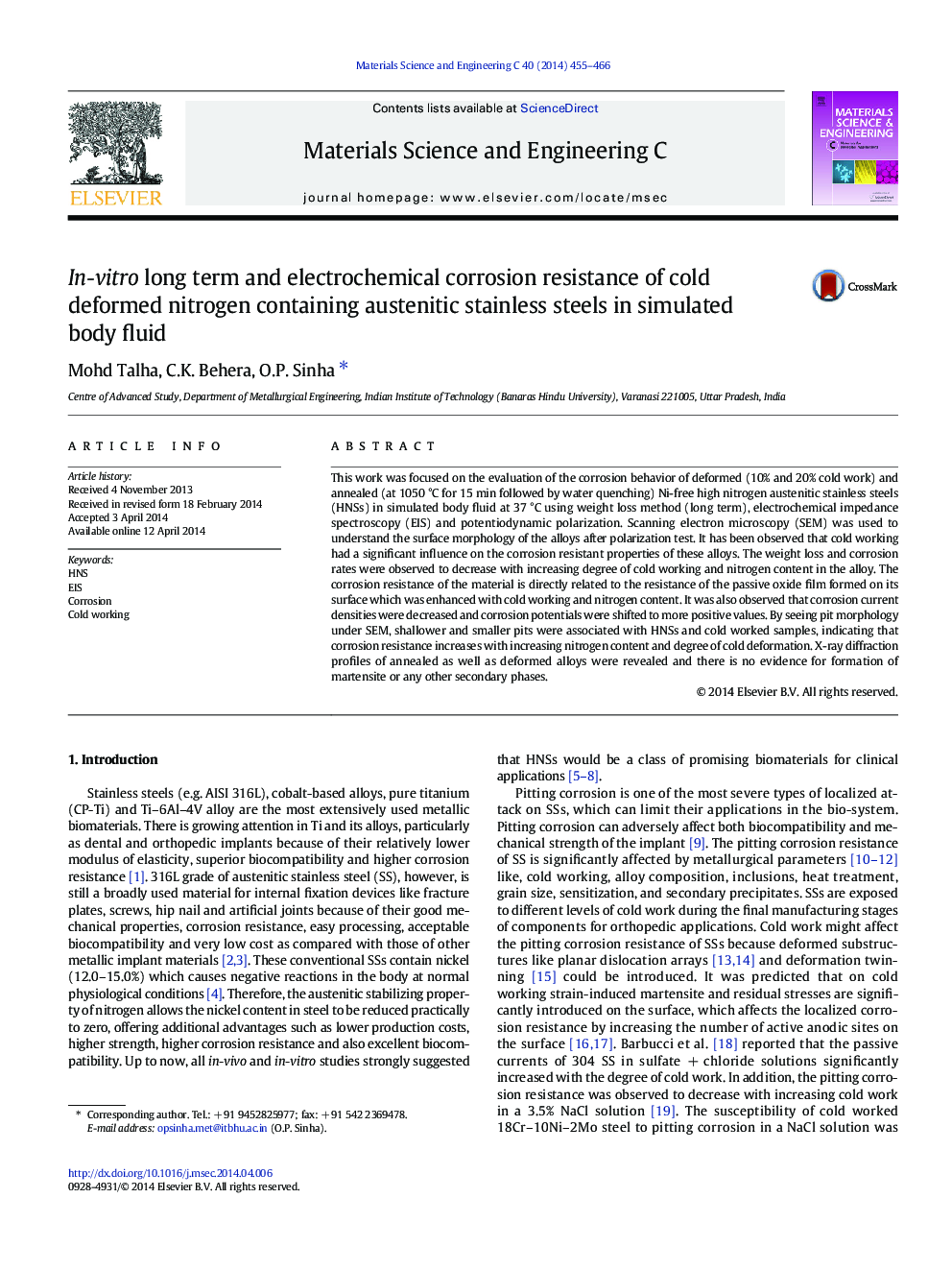| کد مقاله | کد نشریه | سال انتشار | مقاله انگلیسی | نسخه تمام متن |
|---|---|---|---|---|
| 1428363 | 1509181 | 2014 | 12 صفحه PDF | دانلود رایگان |
• Effect of cold working on corrosion of Ni-free austenitic stainless steels in SBF
• Effect of prior cold work on long term and electrochemical corrosion behavior
• Weight loss and corrosion rates decreased with cold working and nitrogen content.
• Resistance of the passive film was enhanced with cold working and nitrogen content.
• No formation of martensite or any other secondary phases with cold working
This work was focused on the evaluation of the corrosion behavior of deformed (10% and 20% cold work) and annealed (at 1050 °C for 15 min followed by water quenching) Ni-free high nitrogen austenitic stainless steels (HNSs) in simulated body fluid at 37 °C using weight loss method (long term), electrochemical impedance spectroscopy (EIS) and potentiodynamic polarization. Scanning electron microscopy (SEM) was used to understand the surface morphology of the alloys after polarization test. It has been observed that cold working had a significant influence on the corrosion resistant properties of these alloys. The weight loss and corrosion rates were observed to decrease with increasing degree of cold working and nitrogen content in the alloy. The corrosion resistance of the material is directly related to the resistance of the passive oxide film formed on its surface which was enhanced with cold working and nitrogen content. It was also observed that corrosion current densities were decreased and corrosion potentials were shifted to more positive values. By seeing pit morphology under SEM, shallower and smaller pits were associated with HNSs and cold worked samples, indicating that corrosion resistance increases with increasing nitrogen content and degree of cold deformation. X-ray diffraction profiles of annealed as well as deformed alloys were revealed and there is no evidence for formation of martensite or any other secondary phases.
The effect of cold working on the in-vitro corrosion behavior of indigenized Ni-free nitrogen containing austenitic stainless steels was investigated. The weight loss and corrosion rates were observed to decrease with the degree of cold working and nitrogen content in the alloy. The corrosion resistance of the material was enhanced with the degree of cold working and nitrogen content.Figure optionsDownload as PowerPoint slide
Journal: Materials Science and Engineering: C - Volume 40, 1 July 2014, Pages 455–466
